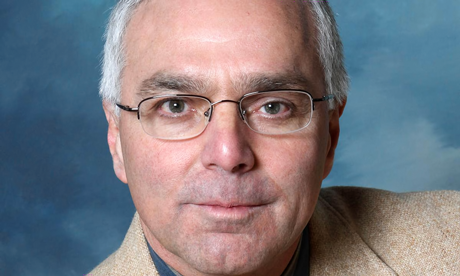Allow me to share with you one of the high points of my life – a short, yet deeply enriching encounter with a saint.
Nearly 30 years ago, I worked at Catholic Charities of the Archdiocese of Washington’s emergency food warehouse. Missionaries of Charity sisters caring for HIV/AIDS patients at their Gift of Peace House in Washington, D.C. used to regularly stop by for food assistance.
Since I helped with food distribution, I got to know the sisters. One day while picking up food, one of the sisters said to me, “Mother is coming.” I said, “Do you mean Mother Teresa?” She said, “Yes.” I excitedly replied, “May I come?” And she said, “yes.”
A few days later, standing in front of the Gift of Peace House with about 20 other guests, I saw Mother Teresa get out of a car and walk towards the house. Immediately the sisters affectionately ran to greet her.
Then, as we stood in a circle, Mother Teresa began to walk to each guest silently placing a Miraculous Medal of the Blessed Mother in each of our hands.
I remember she seemed to keep her head humbly bowed as she approached each of us. But when she reached me, I said to her “Namaste” – which is the normal greeting in Hindi.
Lifting up her head, and looking at me somewhat surprised, she greeted me back saying “Namaste.”
Then I said to her in Hindi, “Kaise hain?” Inquiring, how are you? And she replied, “Theek” which means OK.
Having exhausted my Hindi vocabulary, my brief encounter with Mother Teresa of Kolkata (formerly Calcutta) had ended. But the personal experience of conversing with a living saint continues to spiritually enrich my life to this day.
In a few days, on Sept 4, Pope Francis will canonize Mother Teresa – officially designating her as one of the saints of the Catholic Church.
Imperfect like all of us, yet holier than the vast majority of us, Mother Teresa truly exemplified what it means to pick up one’s cross and follow Jesus.
And what a heavy cross she carried. Leaving the comfort of her convent, she ventured out into the slums of Calcutta with practically nothing, to care for the poorest of the poor – the unloved, the starving, the homeless, the stigmatized victims of leprosy, the abandoned and forgotten, the dying and the unborn.
In her 1979 Nobel Peace Prize lecture, Mother Teresa said “I feel the greatest destroyer of peace today is abortion, because it is a direct war, a direct killing … if a mother can kill her own child, what is left for me to kill you and you kill me – there is nothing between.”
She went on to speak about a man she and her sisters picked up from the gutter. With worms eating away at him, they brought him back to their home and cared for him. He said, “I have lived like an animal in the street, but I am going to die like an angel, loved and cared for.”
There is an excellent new DVD titled “The Letters: The Untold Story of Mother Teresa” (see: http://bit.ly/2bv2mpM). This movie will inspire you and me to step out of our comfort zones for the sake of those who suffer, and for the health of our own souls.
Consider the power of this reflection from St. Mother Teresa: “I used to believe that prayer changes things, but now I know that prayer changes us and we change things.”
- Tony Magliano is an internationally syndicated social justice and peace columnist. He is available to speak at diocesan or parish gatherings about Catholic social teaching. His keynote address, “Advancing the Kingdom of God in the 21st Century,” has been well received by diocesan and parish gatherings from Santa Clara, Calif. to Baltimore, Md. Tony can be reached at tmag@zoominternet.net.
